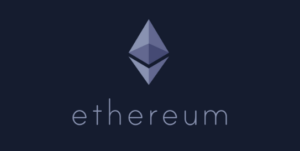Bitcoin Network Launches Nakamoto Upgrade to Boost Speed
Bitcoin’s layer-2 network, Stacks, is finally activating its Nakamoto upgrade after facing delays. This upgrade is expected to significantly enhance transaction speeds within the network. The activation process for the upgrade commenced recently and is set to detach the Stacks network’s block production from Bitcoin, resulting in a substantial increase in block production speed. This enhancement will lead to faster confirmation times, reducing them from Bitcoin’s average of 10 minutes to mere seconds.
Operators of Stacks have the duration of Stacking cycle 92 to implement the upgrade fully. Once this cycle is completed, core developers will select the final hard fork block, and the Nakamoto consensus rules will be fully implemented. Each Stacking cycle lasts around two weeks, consisting of 2,100 Bitcoin blocks.
Following the code distribution on Wednesday, the price of the native STX token has fallen by nearly 11% over the last 24 hours, with a current price of $1.59. This decline reflects broader losses in the crypto market from the previous day and a further dip for STX post-announcement.
The Nakamoto upgrade, which began partial implementation in April, involves the network transitioning to a new proof-of-transfer (POX) contract. This mechanism involves Stacks “miners” burning BTC to mine Stacks blocks and earn STX rewards, replacing the traditional electricity-intensive mining process.
The upgrade was delayed for eight weeks to prioritize security features and code audits. With the arrival of Nakamoto, Stacks will witness increased speed, and transactions will inherit full Bitcoin finality, making them as difficult to reverse as Bitcoin transactions.
Nakamoto also lays the groundwork for the introduction of sBTC, a programmable Bitcoin asset enabling users to bridge their BTC to the Stacks network in a relatively decentralized manner.
According to Stacks Foundation Executive Director Mitchell Cuevas, Nakamoto is already code complete, with sBTC expected to follow suit in September, ready for release four weeks post full Nakamoto activation. Moving forward, Stacks aims to focus on sBTC adoption, blockchain interoperability, and fostering decentralized applications on the improved platform.
Additionally, the Stacks Foundation will prioritize research into BitVM, a computational framework that has sparked new innovation and layer-2 designs on top of Bitcoin. Cuevas emphasizes the importance of careful research before investing in new Bitcoin layer-2 networks, urging users to exercise caution and avoid falling for unrealistic promises in the space.




